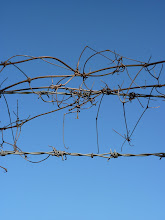Onagawa part 4 the temporary town.
I previously tried to explain the complexities of rebuilding the town of Onagawa after the tsunami. A second question that I had was what had happened to the population for a destroyed town and where had the survivors been living, working, shopping and eating for the last two years.
Firstly some more facts from the translated guide book , the population of Onagawa before the disaster was 10,014 people . 827 people lost their lives or are still missing, only 535 bodies were ever recovered. Mayumi explained to me that the current population of the town is now roughly 5000 due to people relocating to inland cities for work etc.
However while reconstruction is carried out a set of temporary facilities has sprung up in various locations around the town including accommodation, restaurants and shops. It was remarkable to see how life was able to carry on and how people had been resourceful to start or restart businesses or create facilities for people to use.
I'll try and explain more with each picture and as always they are clickable for more quality.
Temporary housing had been constructed in several locations. In this case utilising a new design an apartment block of container style housing was constructed inside a baseball stadium on higher ground near the town.
I stayed in a temporary hotel called El Faro which was built on wheels to get around planning restrictions. This is the hotel restaurant.
On the first evening in Onagawa we ate , drank and enjoyed excellent conversation in this excellent temporary Izakaya constructed in what seemed to be a large wooden shed.
A temporary shop area mainly for construction workers, selling souvenirs, guides and snacks
We visited the amazing little Container Village Mall which was colourful and had a great friendly atmosphere. Originally the shops were in metal containers like the ones above but have since been expanded with wooden fronts to give a larger space .
The land has been given rent free to the traders by the owner Mr Abe which allows them to get around Japanese bureaucracy that states traders can only operate in temporary accommodation for two years.
I couldn't understand this rule as clearly it will take much longer than two years to rebuild the town.
The new wooden shop fronts
Inside the shops run into one giving a light airy indoor market feel
At a second location in a large car park another set of temporary shopping streets had been constructed with restaurants and coffee shops mixed in among the traders.
Mayumi introduced me to her Mother's best friend who runs a fruit and veg shop in the temporary area,
Mayumi is holding a copy of her book which features a photograph of the store and owner.
The best sweetshop in the world opened in a container on his own land to give the children somewhere to go. Kota Niitsuma explained to me he just wanted to see their smiling faces. The area it was in had been completely destroyed but as he owns the land he can have the container there until full reconstruction starts. After that he said he would build a permanent store.
Labels: architecture, Japan, Miyagi, Onagawa















0 Comments:
Post a Comment
Subscribe to Post Comments [Atom]
<< Home